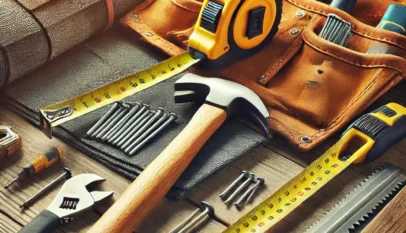Perfect Bending: Mastering the Art of Precision in Metal Fabrication
Perfect bending is a crucial technique in various fields, including metalworking, plumbing, and woodworking. Achieving perfect bends requires precision, the right tools, and an understanding of material properties. This technique not only enhances the aesthetic appeal of a project but also contributes to its structural integrity.
Those seeking to master this skill must consider several factors. The choice of material, the method of bending, and the tools used can all impact the outcome. With the right knowledge, anyone can learn how to create flawless bends that meet both functional and visual standards.
A deep dive into perfect bending reveals tips and strategies that can simplify the process. By exploring these insights, readers can enhance their skills and ensure that each bend meets their expectations. This is not just about technique; it’s about crafting pieces that reflect attention to detail and expertise.
Fundamentals of Perfect Bending
Perfect bending requires an understanding of the material properties involved and the physics that governs the bending process. Knowledge in both areas ensures precision and accuracy in achieving the desired bend without compromising material integrity.
Understanding Material Properties
Material properties play a crucial role in perfect bending. The key properties include:
- Yield Strength: The maximum stress a material can withstand while still returning to its original shape.
- Elastic Modulus: This measures the material’s ability to deform elastically (non-permanently) when a force is applied.
Different materials respond uniquely to bending forces. For instance, metals, plastics, and composites have varying levels of flexibility and strength. Understanding these characteristics allows for appropriate selection for specific bending applications.
Physics of Bending
The physics of bending involves the application of forces and moments and their effect on material behavior. When a force is applied, it creates bending moments that induce stress within the material.
Key concepts include:
- Neutral Axis: The line in the beam where the material experiences no tensile or compressive stress during bending.
- Bending Stress: Calculated using the formula (\sigma = \frac{M \times c}{I}), where (M) is the moment, (c) is the distance to the neutral axis, and (I) is the moment of inertia.
These factors determine how well a material will perform under bending loads, making this understanding essential for achieving perfect bends.
Advanced Techniques and Applications
Advanced techniques in bending and their applications play a crucial role in enhancing precision and efficiency in various industries. This section explores the significance of precision bending in engineering and highlights innovations that are shaping the future of bending technology.
Precision Bending in Engineering
Precision bending is essential in industries that require exact tolerances, such as aerospace, automotive, and manufacturing. This technique ensures that components fit together seamlessly, significantly reducing the risk of errors during assembly.
Key parameters influencing precision bending include:
- Material Properties: Different materials react differently during bending. Understanding the yield strength, ductility, and thickness is vital.
- Bending Radius: A smaller radius can increase stress, potentially leading to material failure.
- Equipment Calibration: Regular calibration of bending machines ensures consistent results.
By leveraging advanced software for simulations, engineers can predict outcomes and adjust processes accordingly, ensuring tighter tolerances and high-quality results.
Innovations in Bending Technology
Recent innovations are enhancing the capabilities of bending technology. Automation and robotics have streamlined the bending process, improving speed and accuracy.
Notable advancements include:
- CNC Benders: These machines offer programmable settings, allowing for complex shapes to be produced with minimal manual intervention.
- 3D Bending Simulation Software: This software models bending actions, helping engineers visualize results before physical production.
- Material-Specific Tools: Custom tools made for specific materials improve efficiency and reduce waste.
These technological advancements enable manufacturers to meet demanding specifications while reducing production time and costs. As the industry evolves, these innovations will continue to push the boundaries of what is possible in bending applications.
Vaishno Devi Helicopter Booking Online: A Convenient Way to Reach the Shrine
Vaishno Devi is one of the most revered pilgrimage sites in India, attracting millions of …















